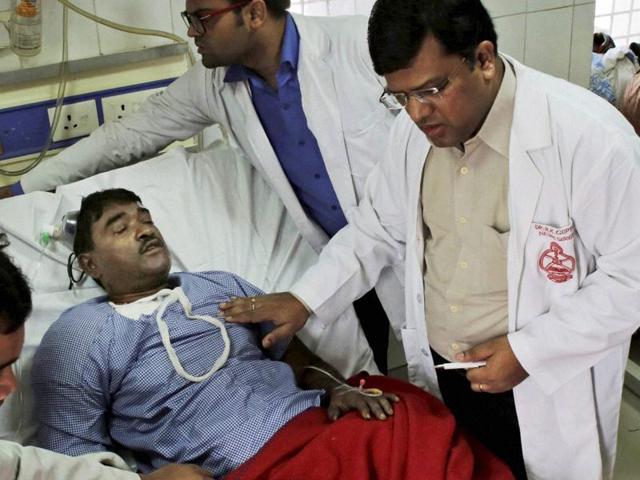Before Indore-Patna Express tragedy: In 5 yrs, railways saw 2 dozen near-misses
About three months before the Indore-Patna Express derailed and killed 147 people on Sunday, a packed train from Varanasi hurtled down the same tracks towards another stationed just off Lucknow. In the falling darkness, a tragedy was about to unfold.
About three months before the Indore-Patna Express derailed and killed 147 people on Sunday, a packed train from Varanasi hurtled down the same tracks towards another stationed just off Lucknow. In the falling darkness, a tragedy was about to unfold.

But the driver of the Varanasi-Lucknow train spotted the stationary coach and slammed the brakes, averting a head-on collision by just a couple of hundred yards.
It was not a one-off miss.
Indian Railways recorded at least 24 “averted collisions” in the five years to August 31 this year, Hindustan Times has found but with better safety standards, instances of near-misses are on the decline. Averted collision is a situation when two trains are only 400 metres away from each other on the same tracks. Only one near-miss was recorded this year.
Read: Indore-Patna Express derailment: Doctors use WhatsApp to find kin of survivors
But the largely colonial-era railway system is saturated, carrying about 23 million people daily on ageing tracks that allow average speeds of just about 50 kmph. It suffers from inefficiencies, fractured tracks and poor signalling equipment that cause accidents, in what is a stark reminder of the challenge Prime Minister Narendra Modi faces in turning around the world’s fourth largest rail network.
In most cases, alert drivers helped avert collisions. For example, in December 2012, the driver of the Jharkhand Sampark Kranti Express jammed the brakes after he saw the tail lamps of the North East Express on the same tracks near Allahabad.
“A big tragedy was averted,” said a senior official from the North Central Railway on condition of anonymity because he wasn’t authorised to speak to journalists.
Between 2011 and August this year, the busy Northern Railway (NR) zone recorded the most number of near-misses.
“The NR operates more trains than any of the 16 railway zones in the country,” said the officer.
Read: Kanpur train tragedy: Woman’s walking stick saves family of seven
But how do trains get on the same tracks?
“Drivers overshooting the signals, lack of coordination between operations and safety departments and wrong signal given to a train are some reasons,” said another railways official.
The safety wing of the railways, responsible for ensuring accident-free traffic, faces a 20% staff crunch, sources added.
But higher safety standards have helped bring down accidents. Better training for drivers, use of vigilance control devices and LED lights for easier sighting of signals have improved safety.
A practice of assigning drivers to set routes has also helped familiarise themselves with halts and track inter-changes, minimising the possibility of accidents.
“Due to more automation process, human dependence has gone down in various operations,” said railways spokesman Anil Saxena.





